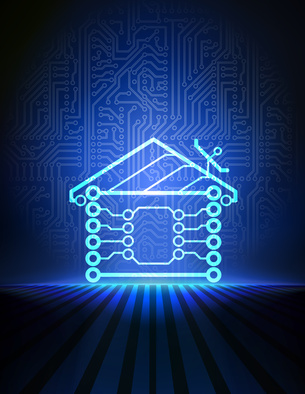‘Futureproof’ Your New Home
Modern housing may not have reached Jetson-level performance just yet, but a growing number of new homes today are prepared for ever-increasing amounts of automation and electronics — more than any existing or remodeled home can ever hope to be.
These homes, built during the last five years, are equipped with advanced wiring and cabling networks that enable the owners to add, reconfigure and accommodate more electronic systems and products — from security cameras to iPod docks — without extensive rewiring.
This type of network, in both its design and components, effectively “futureproofs” a home for new, low-voltage and cable-enabled consumer technologies. No one can predict the future, but a low-voltage home wiring scheme that provides a wealth of capacity (or bandwidth) together with flexibility of use goes a long way to anticipating consumer electronics to come.
Imagine, for example, that you want to link the personal computers in the house to a central printer in a home office. An advanced wiring system serving multi-port data, telecom, and cable outlets throughout the house allows the owners to plug in PCs anywhere and be connected. If you want to move a high-definition TV to another room or hook up a whole-house music system — and add or replace components within those and other networks — an advanced wiring system makes that flexible use easy.
The heart of a structured or advanced home wiring system is its design. In older homes, high-voltage electrical service is provided to every appliance, light fixture, outlet, and switch in what’s called a “daisy chain” configuration. There is no way to reconfigure the chain and its use without digging into the walls to rewire the house.
For a structured wiring scheme, each wire and cable is looped to a specific outlet and back to a centrally located service box — a design called a “home run.” From that central panel, an owner or professional electrician can configure and reconfigure which wires serve which outlets and can add capacity without tearing up walls.
In addition, the advanced wiring system serves only products and systems that need low-voltage electricity, which includes the vast majority consumer electronics such as PCs, MP3 players, security systems, and high-def televisions. While high-voltage wiring continues to supply electricity to major kitchen appliances and general lighting, the low-voltage wiring and cable, supplies only the level of electricity that consumer products need to operate, thus reducing consumption and the cost of energy.
The meteoric growth of structured wiring systems in new homes and the “futureproofing” they provide, offer a clear distinction and immediate value for buyers considering whether to purchase a new home or buy or stay in an older home.

